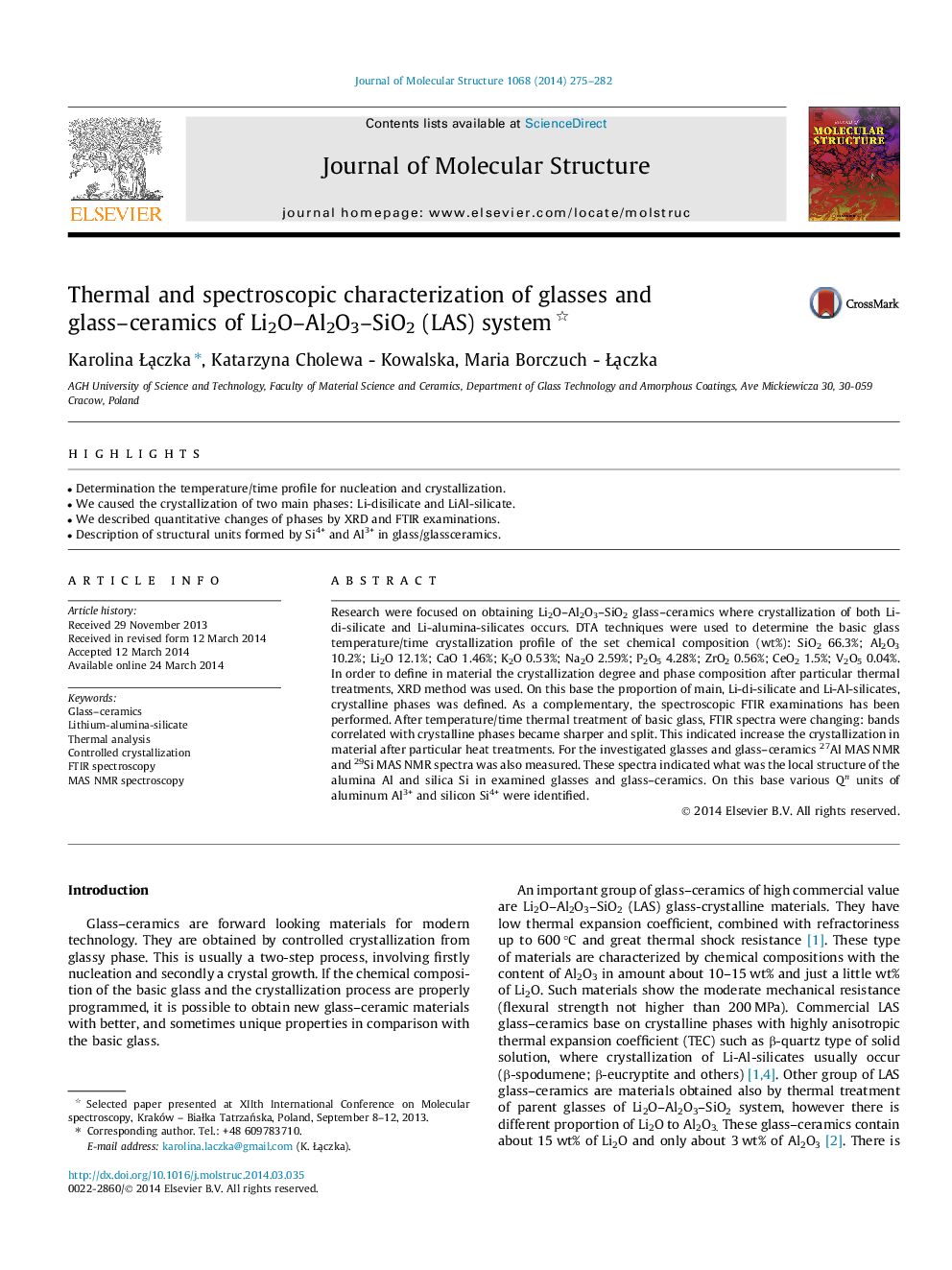| Article ID | Journal | Published Year | Pages | File Type |
|---|---|---|---|---|
| 1405561 | Journal of Molecular Structure | 2014 | 8 Pages |
•Determination the temperature/time profile for nucleation and crystallization.•We caused the crystallization of two main phases: Li-disilicate and LiAl-silicate.•We described quantitative changes of phases by XRD and FTIR examinations.•Description of structural units formed by Si4+ and Al3+ in glass/glassceramics.
Research were focused on obtaining Li2O–Al2O3–SiO2 glass–ceramics where crystallization of both Li-di-silicate and Li-alumina-silicates occurs. DTA techniques were used to determine the basic glass temperature/time crystallization profile of the set chemical composition (wt%): SiO2 66.3%; Al2O3 10.2%; Li2O 12.1%; CaO 1.46%; K2O 0.53%; Na2O 2.59%; P2O5 4.28%; ZrO2 0.56%; CeO2 1.5%; V2O5 0.04%. In order to define in material the crystallization degree and phase composition after particular thermal treatments, XRD method was used. On this base the proportion of main, Li-di-silicate and Li-Al-silicates, crystalline phases was defined. As a complementary, the spectroscopic FTIR examinations has been performed. After temperature/time thermal treatment of basic glass, FTIR spectra were changing: bands correlated with crystalline phases became sharper and split. This indicated increase the crystallization in material after particular heat treatments. For the investigated glasses and glass–ceramics 27Al MAS NMR and 29Si MAS NMR spectra was also measured. These spectra indicated what was the local structure of the alumina Al and silica Si in examined glasses and glass–ceramics. On this base various Qn units of aluminum Al3+ and silicon Si4+ were identified.
